I. Introduction
Transformation of average one-day cricket score is evident. One-Day International (ODI) cricket is a fast-paced and exciting game where each team tries to score the most runs in just 50 overs! It’s played internationally, and the ODI World Cup is a massive global event.
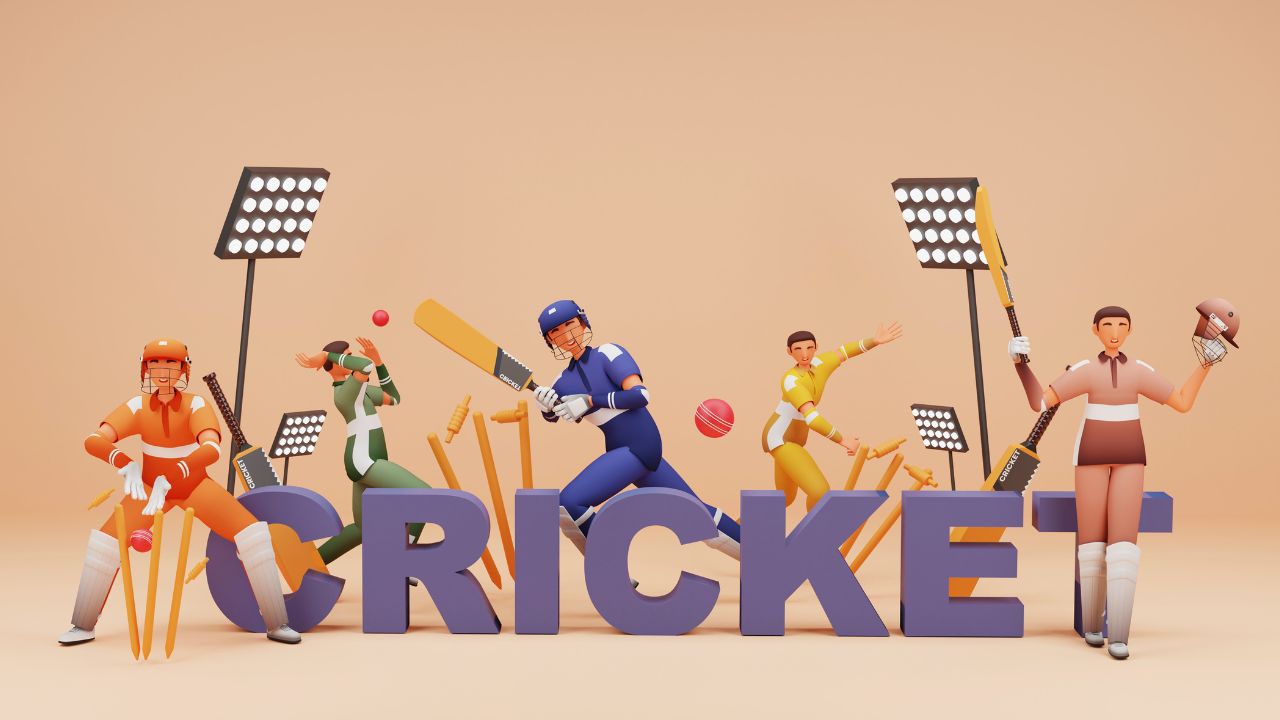
Table of Contents
Understanding how much ODI scores have changed over the years is essential. The rules of the game and player skills have evolved, leading to more significant, thrilling scores. Knowing this history makes watching today’s ODIs even more fun and helps us imagine what the future of cricket holds!
II. Historical Context
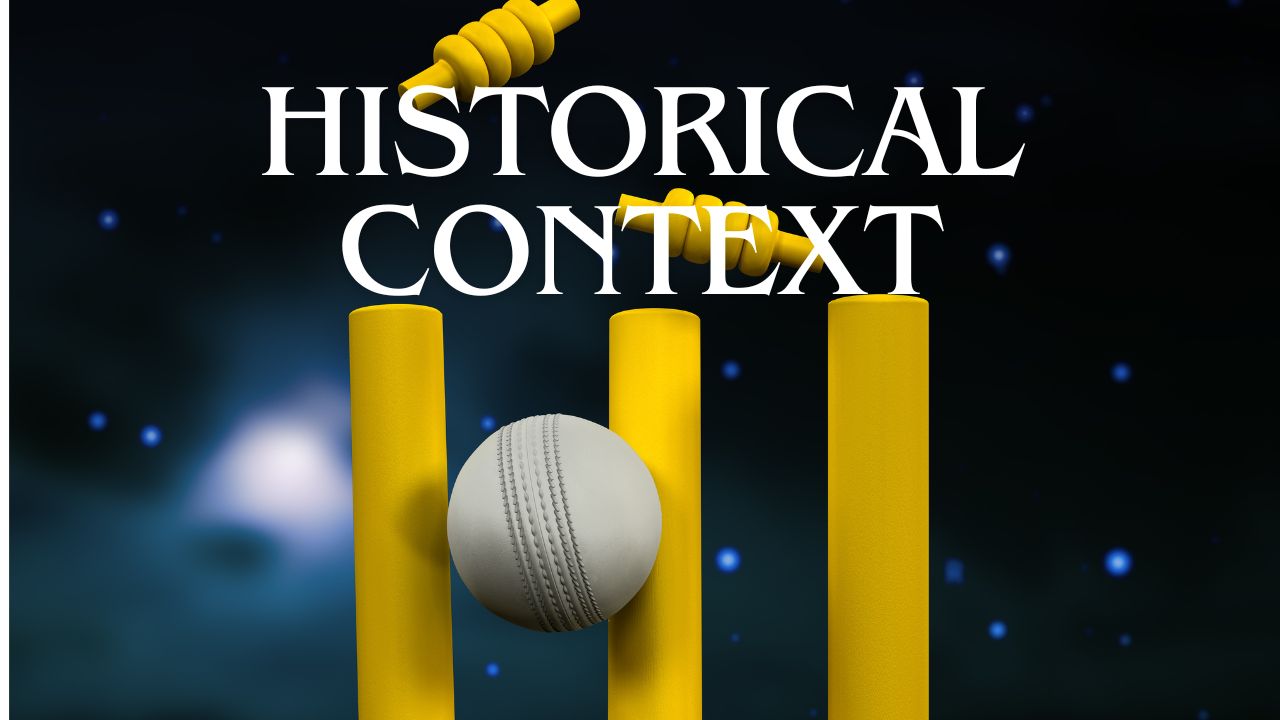
ODI cricket was only sometimes the high-scoring, action-packed spectacle it is today. In the early days, the game had a slower pace, and teams experimented with different strategies as the rules were still taking shape.
Matches often stretched on much longer than they do now, and it was less common to see the vast run totals that are a hallmark of modern ODI cricket. This slower, more experimental phase was necessary for ODI’s evolution into the thrilling sport we love.
III. Average One-Day Cricket Score
A. Calculation of the average one-day cricket score
Here’s a breakdown of how average scores are calculated in One-Day International cricket:
The Formula: To find an average ODI score, you take a team’s total runs scored across a certain number of matches and divide that number by the number of innings they’ve played.
Example: Let’s say a team has scored 12,000 runs in 50 ODI innings. Their average score would be 12,000 / 50 = 240 runs per innings.
What it Means: A team’s average score gives us a general idea of how many runs they will likely score in an ODI match. Of course, some games will have higher and lower scores, but the average gives us a good starting point.
B. Comparison of average scores in different eras
We can broadly divide ODI cricket history into a few main eras, each with its scoring trends:
- The Early Years (1970s – early 1990s): ODI cricket was still finding its footing. Teams were more cautious, pitches were less batting-friendly, and scoring limits differed. Average scores often hovered around 200-230 runs.
- The Power and Innovation Era (mid-1990s – early 2000s): Changes in rules (like fielding restrictions) and the arrival of batting legends like Sachin Tendulkar pushed scores upward. Averages climbed towards the 250-260 range.
- The T20 Influence (2000s – Present): The explosion of T20 cricket made batters even more fearless. New shots, better bats, and an aggressive mindset have skyrocketed the average scores. In modern ODIs, averages of 280-300 and even higher are becoming common.
Why the Differences Matter
- Appreciation: Understanding these scoring shifts helps us better appreciate incredible batting feats from different eras. A century scored in the 1980s was achieved in a very different context than today!
- Game Evolution: Changing averages perfectly illustrate how ODI cricket has transformed over time, becoming faster and more explosive.
- Predicting the Future: Paying attention to how averages change could give us clues about what’s next in store for the ODI format.
C. Impact of T20 cricket on ODI scores

- Batsman Mindset: T20 cricket focuses on hitting boundaries and scoring at a lightning pace. This attacking mindset has transferred to ODIs, with batters becoming more fearless and taking risks they might have avoided in the past.
- Innovative Shots: The T20s encouraged the invention of new, unorthodox shots designed to clear the boundaries. These same shots are now regularly used in ODIs, making it easier for batters to score heavily.
- Power Hitting: The need for quick runs in T20s has made players focus on power-hitting. This focus on strength and technique has directly translated to bigger hits and higher scoring potential in ODIs.
- Fielding Restrictions: Some of the rules from T20s have been adapted into ODIs. These changes make it more difficult for fielding teams to contain aggressive batting.
- Pitch Preparation: The appetite for high-scoring games has sometimes led to flatter pitches being prepared for ODIs, making it easier for batters to score freely.
The Result
The influence of T20 has undeniably made ODI cricket a higher-scoring affair:
- Scores of 300+, once considered very good, are now increasingly common.
- We see 350+ scores and even 400+ totals with more regularity, thanks to the aggressive approach inspired by T20 cricket.
IV. Changes in ODI Scores Over Time
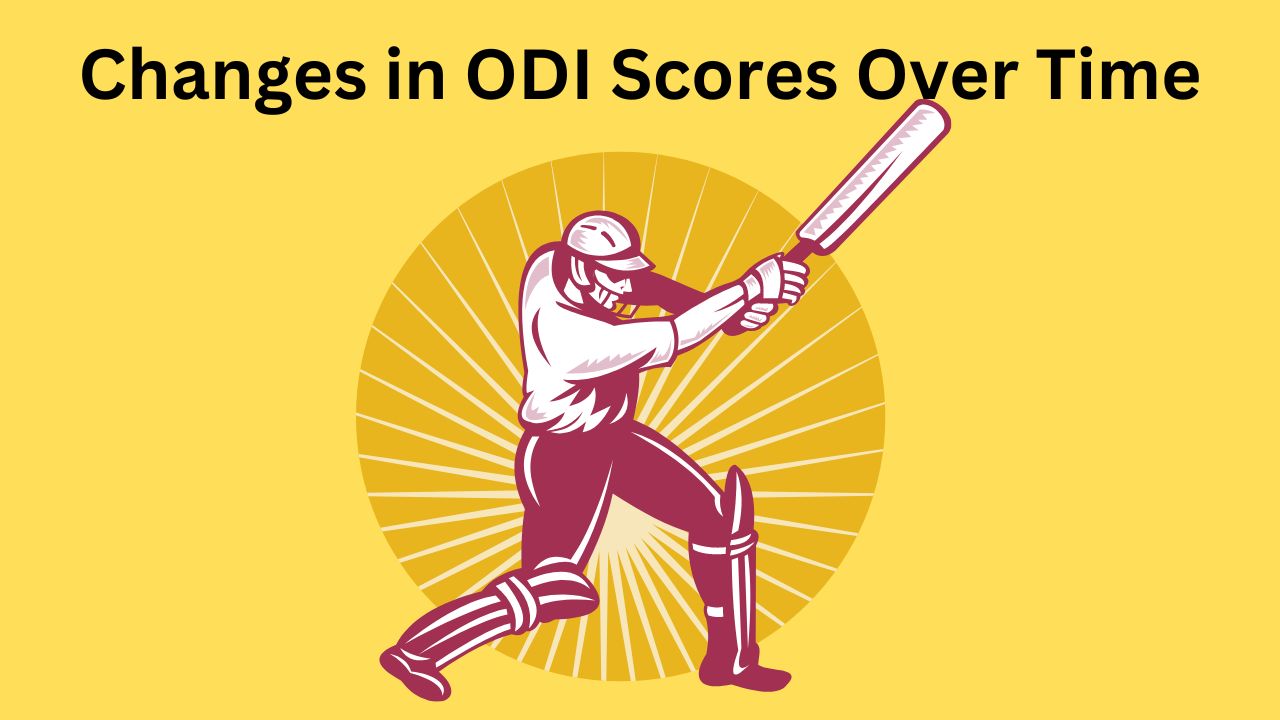
Here’s a breakdown of those two factors connected to the rise of ODI scores:
A. Increase in Sixes and Fours
- A Clear Shift: Historically, ODI batters focused on Arunning between the wickets for singles and twos. Nowadays, hitting boundaries is essential for big scores.
- Why the Change: The adventurous mindset of T20 cricket, along with powerful bats and favorable rules, encourages hitting sixes and fours.
- The Statistical Proof: Studies show a sharp increase in the number of boundaries hit per ODI match in recent years compared to the early eras.
B. Evolution of Batting Strategies and Techniques
- Attacking from the Start: Batsmen no longer focus on carefully preserving their wicket early on. Instead, they attack from the first few overs to score boundaries immediately.
- Power Hitting Focus: Players train specifically for power-hitting, developing strength and timing to clear the ropes quickly.
- New Shots: Batsmen have invented a variety of unorthodox shots, like switch hits and scoops, to surprise bowlers and exploit field placements.
- Calculated Risk: Batsmen are comfortable taking calculated risks in pursuit of quick runs, even if it sometimes costs them their wicket.
The Connection:
The increase in sixes and fours directly results from the evolution of batting strategies. Batters are more aggressive, have better power-hitting techniques, and are equipped with more powerful bats. This has changed the landscape of ODI cricket, making it the high-scoring spectacle it is today.
V. Factors Affecting ODI Scores
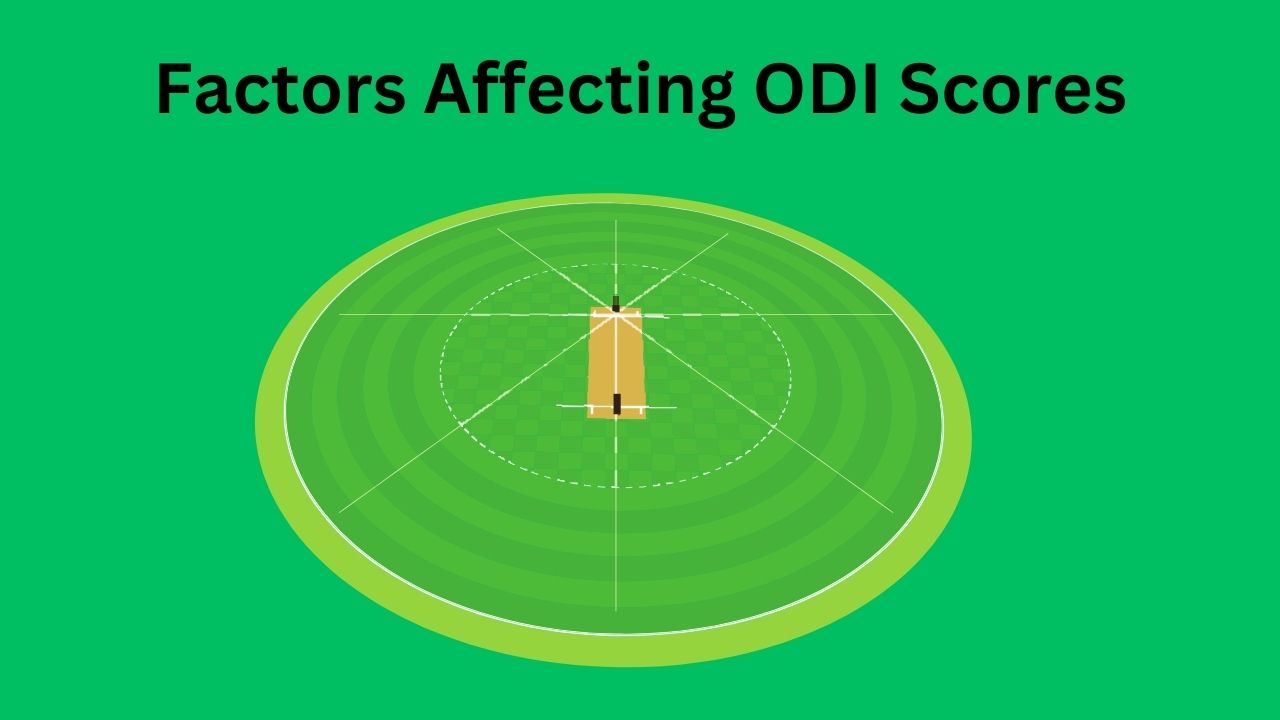
Here’s a breakdown of how those factors influence One Day International (ODI) cricket scores. I’ll also include some specific points about how they differ from factors affecting cricket.
A. Pitch Conditions and Ground Sizes
Pitch Behavior:
- Flat Pitches: Favor batters. Balls bounce predictably, making scoring easier. High scores are expected.
- Slow Pitches: Favor spin bowlers. The ball holds up on the pitch, making it harder for batters to time their shots—lower-scoring games.
- Green/Seaming Pitches: Assist fast bowlers who can get bounce and movement off the pitch, making it harder for batters. It can lead to both lower-scoring games (if batters struggle) or high-scoring chases (if a team risks aggression for runs).
Ground Size:
- Small Grounds: Favor batters; shorter boundaries mean easier sixes.
- Extensive Grounds: Longer boundaries favor athletic fielders and make it harder to score boundaries.
B. Team Composition and Player Abilities
- Batting Approach: Teams with power hitters favor aggressive scoring to maximize totals. Those with technical batters may focus on preserving wickets and building partnerships.
- Bowling Variety: Teams benefit from:
- Pace Bowlers: Cause difficulties early on with a new, hard ball and late in the innings with tactics like yorkers.
- Spin Bowlers: Control run rate, especially on slower pitches, and can take crucial wickets.
- All-Rounders: Provide flexibility with both bat and ball.
- Strategic Acumen: Captains must understand how to use their resources and how the pitch will evolve throughout the 50 overs. Batting order, bowler changes, and field placements are essential.
C. Influence of Weather Conditions and Other External Factors
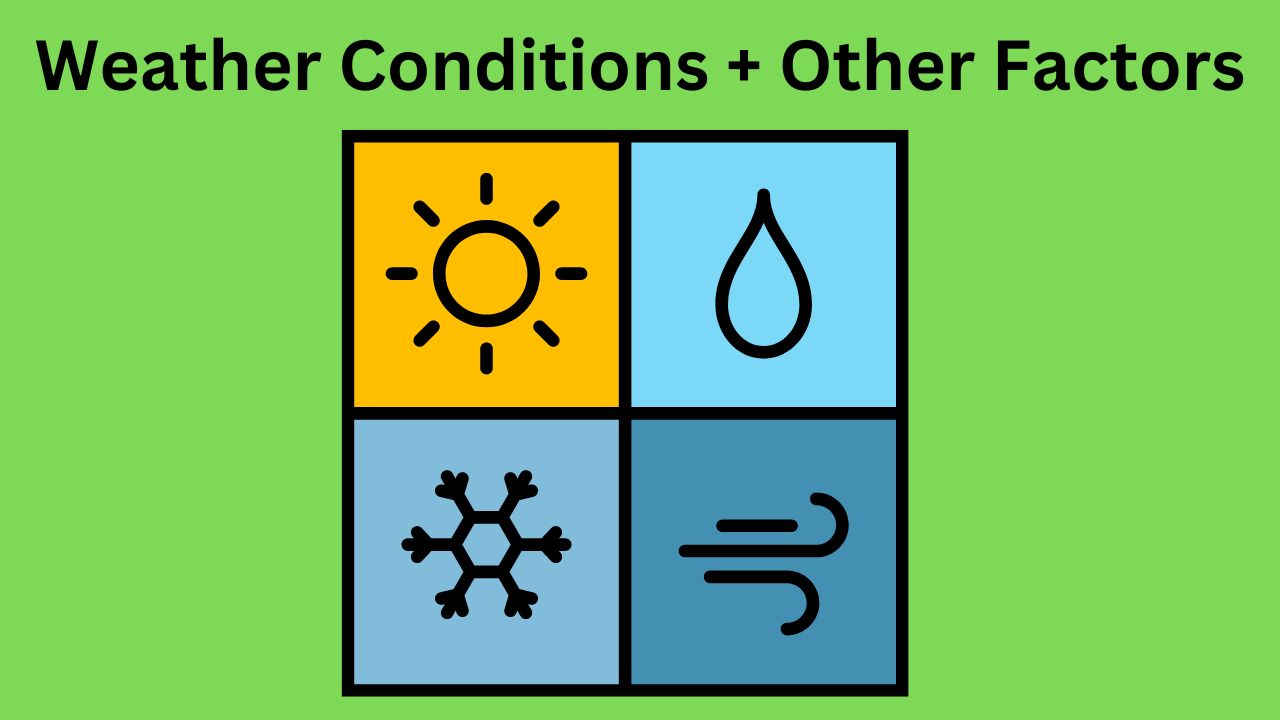
- Rain: Interruptions shorten games, forcing new targets (using the Duckworth-Lewis-Stern method). It changes the required rate and can make matches more unpredictable.
- Dew: In evening matches, dew can make the ball slippery for bowlers, limiting control and making batting easier, especially when chasing.
- Toss: Winning the toss can be crucial. Teams may bat/bowl first, depending on expected pitch behavior and weather.
- Day vs. Day/Night matches: Ball behavior sometimes changes between day and night conditions (dew being a factor).
- Crowd Support can energize the home team, particularly in high-pressure situations.
VI. Conclusion
ODI cricket has seen a dramatic increase in average scores, fueled by T20’s influence, powerful bats, innovative batting, and rule changes. This scoring surge has implications for the format’s future:
- Thrilling Matches: Fans can expect more record-breaking scores and exciting chases.
- The Need for Balance: Strategies must evolve to ensure batters and bowlers have an equal chance to shine.
- Skill Remains Key: While scoring is easier, today’s ODI requires exceptional skills from both batters and bowlers.
The rise in ODI scores demands further analysis. Studying the long-term trends, impact on bowlers, and fan engagement is crucial. This understanding will help shape the future of ODI cricket, ensuring it remains a thrilling and balanced spectacle.
James Paul is a former first-class cricketer and passionate cricket analyst. His decades of experience on the field and his love for the game shape his insights into the strategies and personalities that define world-class cricket.
